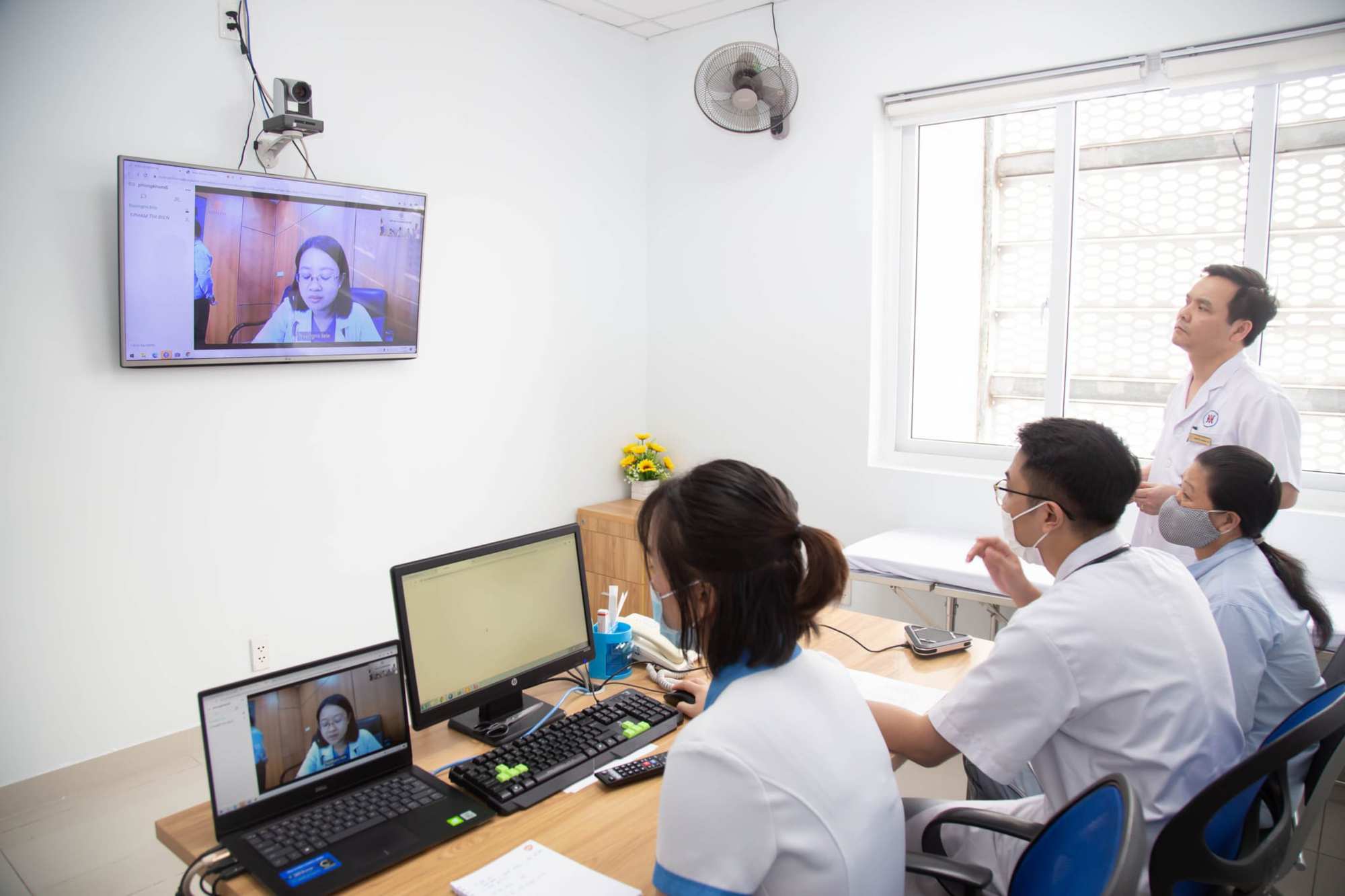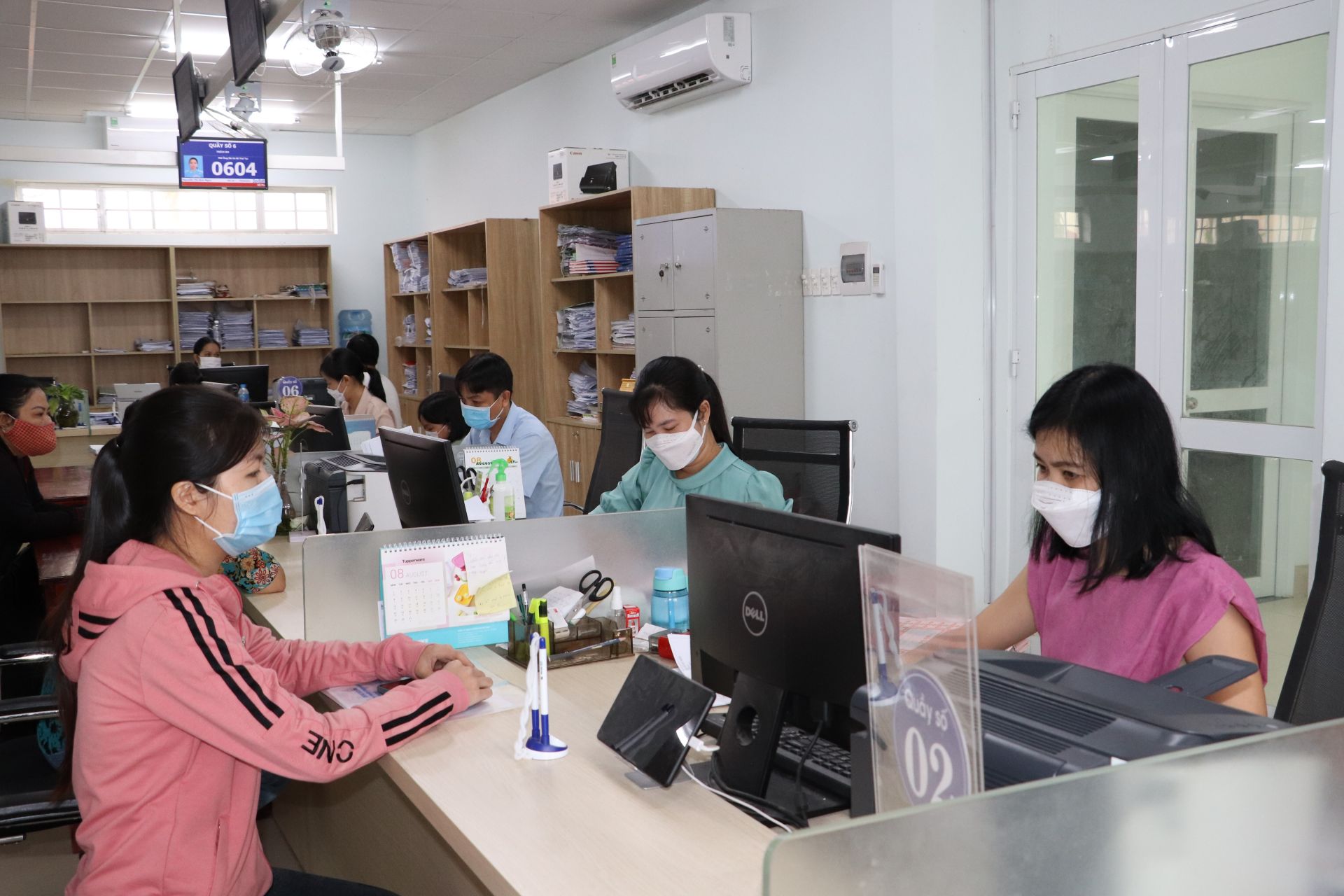Instructions for remote medical examination and treatment at the health facilities in Vietnam
What are the instructions for remote medical examination and treatment at the health facilities in Vietnam? - Quoc Khanh (Dong Nai)

Instructions for remote medical examination and treatment at the health facilities in Vietnam (Internet image)
Regarding this issue, LawNet would like to answer as follows:
On December 12, 2023, the Ministry of Health issued Official Dispatch 7946/BYT-KCB promulgating Guidelines for Remote Medical Examination and Treatment at the grassroots medical level.
Instructions for remote medical examination and treatment at the grassroots medical level
1. Case where the patient meets a health worker for the first examination in Vietnam
A patient is determined to be examined for the first time when:
+ The patient has never examined or consulted with this health worker before;
+ Or the patient has been examined by this health worker before, but more than 6 months since the current examination, or has just been examined within 6 months but with other health problems.
Step 1: Start the examination and consultation
- Depending on the situation, patients can proactively contact health workers, make medical appointments using the software, make audio or video calls with health workers, or send emails or text messages with health questions to start the remote medical consultation. The health worker responds, accepts, and performs the remote consultation.
Step 2: Identify and confirm the patient's consent
- Health workers greet and reintroduce themselves by name, age, and work position;
- Health workers ask again for name, age, address, phone number, or other identifying information to determine the patient's identity;
- Medical staff enter patient identification information into the medical staff's notes on the medical examination registration form or corresponding information fields on the software;
- The health worker agrees with the patient on the purpose and content of the examination and consultation and reaffirms that the patient agrees and is ready to begin the remote examination and consultation.
Step 3: Quickly assess the patient's condition
- Health workers quickly assess whether the patient's condition needs urgent or emergency care or not;
- If the patient needs urgent intervention, the health worker briefly explains to the patient, advises on immediate first aid, and instructs referral when appropriate;
- If the patient does not have a condition that requires urgent intervention, the health staff will clearly explain the related issues to the patient and continue to carry out routine remote examination and consultation steps.
Step 4: Collect and exchange information to evaluate the patient
- Health workers ask and request that patients provide relevant information.
Step 5: Provide a treatment plan for the patient
- If the condition can be appropriately managed through a remote medical examination, health workers can provide a professional assessment of the patient;
- Provide general health promotion educational information to appropriate patients;
- Provide advice on both pharmacological and non-pharmacological treatments and make appointments for the next visit, if necessary;
- Provide guidance on specific treatment methods by prescribing drugs suitable for a definite or provisional diagnosis and in accordance with the lists recommended for use according to each method of remote medical examination and consultation. In addition, health workers also provide advice and instructions on supportive and additional treatment measures, if any;
- Health workers enter information about symptoms, diagnoses, and treatment instructions and instruct patients to view and follow instructions on the patient's application account.
2. Case where the patient meets a health worker for a follow-up examination in Vietnam
Step 1: Start the examination and consultation
- In a typical situation, according to the appointment, the patient contacts the health worker who is managing his or her treatment to receive a remote examination and consultation services to continue the ongoing treatment. Sometimes patients may contact health workers without an appointment to ask for advice about a new health problem that has arisen during treatment.
Step 2: Patient identification and consent
- Health workers greet patients when they see them again;
- Health workers should check the patient's personal information (image, phone number, registered email, etc.) to ensure that they are contacting the correct patient who has registered and scheduled an appointment;
- Medical staff enter patient identification information into the medical staff's notes on the medical examination registration form or corresponding information fields on the software;
- If there is any doubt, health workers can ask the patient to restart the conversation from the registered phone number or email or confirm the patient's identity by asking for the patient's name, age, address, email, or phone number;
- The health worker agrees with the patient on the purpose and content of the examination and consultation and reaffirms that the patient agrees and is ready to begin the remote examination and consultation.
Step 3: Quickly assess the emergency situation
- If the health worker determines that the patient's problems are an emergency that requires emergency treatment, the health worker will briefly explain to the patient and give advice on first aid for immediate emergency care and referral instructions if necessary;
- If there is no emergency problem, proceed with routine follow-up consultation steps.
Step 4: Carry out regular follow-up consultations
- Health workers access and review the patient's previous records (history/medical history/clinical and paraclinical results) to obtain more information for continuing care;
- Health staff decided to collect additional necessary information from the patient for this follow-up visit. From the information collected, health workers will make their own professional decisions regarding the type of consultation and the patient's condition;
- If more time is needed to search for additional information, health workers can decide to pause the remote examination and consultation session and resume at an appropriate time when additional information has been received.
Step 5: Provide a treatment plan for the patient
- After having all the necessary information about the patient, if you think that the patient's health condition can be appropriately managed by a remote examination,
Health workers will provide appropriate treatment management plans for patients in a remote form;
- Depending on the situation, health workers may decide to offer one or more treatment options for the patient:
(1) provide general health education information;
(2) consultation related to specific clinical conditions; and/or
(3) prescribe medication for patients;
- In case a prescription is needed, if the patient is re-examined for the same health problem that was previously managed and treated and no new situations arise, the health worker may re-prescribe the previous medication. for patients to continue using according to the treatment regimen. Sometimes health workers may also consider prescribing a new medication as a “complementary” medication to optimize management of the patient's condition.
If the patient has additional situations related to the disease and the prescription being treated, the health worker can replace the drug with a new one on the list of treatment drugs appropriate to the type of consultation given to the patient;
- If during the follow-up consultation, the medical staff discovers new symptoms related to another type of disease in the patient, they will take the same steps as in the situation where the patient is examined remotely for the first time.
More details can be found in Official Dispatch 7946/BYT-KCB, dated December 12, 2023.
Nguyen Ngoc Que Anh
- Key word:
- health facilities
- in Vietnam
- Number of deputy directors of departments in Vietnam in accordance with Decree 45/2025/ND-CP
- Cases ineligible for pardon in Vietnam in 2025
- Decree 50/2025 amending Decree 151/2017 on the management of public assets in Vietnam
- Circular 07/2025 amending Circular 02/2022 on the Law on Environmental Protection in Vietnam
- Adjustment to the organizational structure of the Ministry of Health of Vietnam: Certain agencies are no longer listed in the organizational structure
- Vietnam aims to welcome 22-23 million international tourists in Vietnam in 2025
-

- Emergency response and search and rescue organizations ...
- 10:29, 11/09/2024
-

- Handling of the acceptance results of ministerial ...
- 09:30, 11/09/2024
-

- Guidance on unexploded ordnance investigation ...
- 18:30, 09/09/2024
-

- Sources of the National database on construction ...
- 16:37, 09/09/2024
-

- General regulations on the implementation of administrative ...
- 11:30, 09/09/2024
-

- Notable new policies of Vietnam effective as of ...
- 16:26, 11/04/2025
-
.Medium.png)
- Notable documents of Vietnam in the previous week ...
- 16:21, 11/04/2025
-
.Medium.png)
- Notable documents of Vietnam in the previous week ...
- 16:11, 02/04/2025
-
.Medium.png)
- Notable new policies of Vietnam to be effective ...
- 16:04, 02/04/2025
-
.Medium.png)
- Notable new policies of Vietnam effective from ...
- 14:51, 21/03/2025
 Article table of contents
Article table of contents
